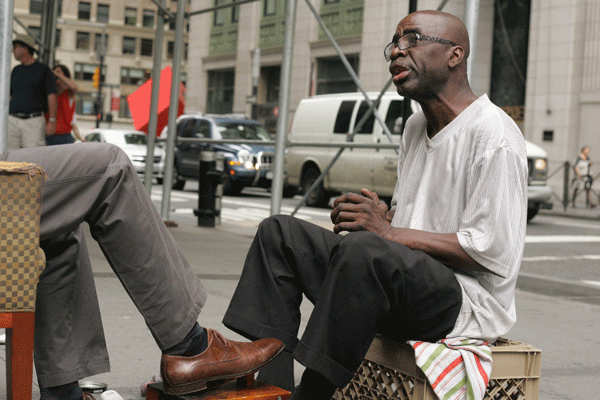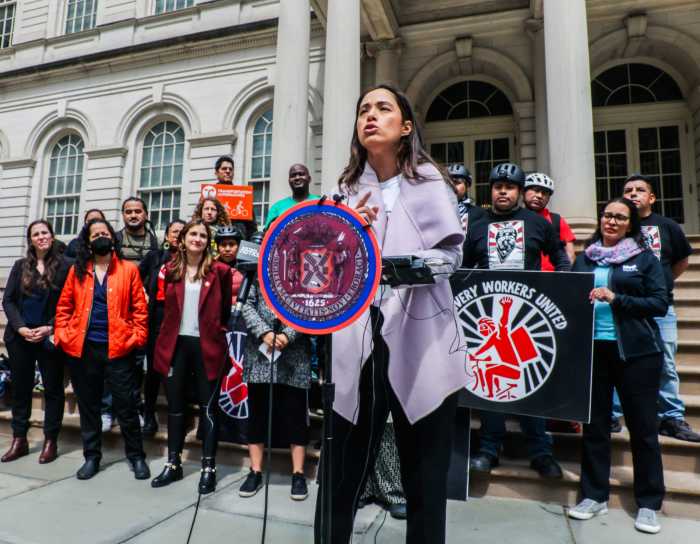
BY SAM SPOKONY | As Mayor Michael Bloomberg and N.Y.P.D. Commissioner Ray Kelly continue to come under fire for police stop-and-frisk policies, some local residents allege not to notice the effects of that citywide tension in Downtown.
Some locals, however, have experienced the impact of stop-and-frisk firsthand or have at least witnessed an incident.
Just 5,100 of the 685,724 stop-and-frisk incidents in New York City last year took place below Canal Street, according to data compiled by the New York World (N.Y.W.), a news project based at the Columbia University School of Journalism.
Statistically this means that that area is, on average, underrepresented when compared to the rest of the city.
According to 2010 U.S. Census data, residents of Downtown neighborhoods made up just over one percent of the total population of New York City. Stop-and-frisk incidents that occurred in the area comprised only about 0.7 percent of the 2011 citywide total reported by the N.Y.P.D.
That didn’t seem to come as a surprise to many people in Lower Manhattan.
“I never give it any thought,” said Arthur Askew, an employee at Studio 21 Jewelers on Cortlandt Street between Broadway and Church Street. “Yeah, there’s a big police presence around this area, but the stop-and-frisk stuff isn’t an issue down here.”
According to the N.Y.P.D.’s website, a stop-and-frisk typically takes place when an officer reasonably suspects that a person has committed, is committing or is about to commit a felony or misdemeanor crime.
Although the blocks immediately surrounding Askew’s store saw 145 stop-and-frisk incidents last year, according to the New York World data map, Askew said that the count alone was not enough to worry him.
Lower Manhattan’s most heavily concentrated stop-and-frisk area in 2011 was on Vesey Street, between Broadway and Church Street — the block immediately adjacent to the World Trade Center P.A.T.H. Station. According to the data map, 596 incidents took place there last year.
Another high-volume region was the stretch of South Street between Whitehall Street and Old Slip, where 322 incidents took place, the data map showed. But several people who work in that area, including a security guard outside the Staten Island Ferry terminal, said they had never seen a stop-and-frisk encounter take place there.
There were also several relative hotspots closer to Canal Street, including one where Brooklyn resident Tony Williams found himself being patted down several weeks ago.
Williams, 41, said he was visiting friends who work on Lispenard Street, between Broadway and Church Street, when he was stopped and frisked.
“I was just standing there when [the police officer] asked me what I was doing, and next thing you know, he’s telling me to get against the wall and turn around,” said Williams.
While he echoed the oft-sounded sentiment that the stop-and-frisk issue is not as much of a problem in Lower Manhattan as in other areas of the city — such as parts of Brooklyn and the Bronx — Williams mentioned a fundamental factor that puts people at risk no matter where they are.
“I’m black, so why would I be shocked about getting stopped and frisked? It didn’t surprise me,” said Williams.
Steven Harris, 52, who has run a shoe shine stand since 1977 on Broadway, between Pine Street and Cedar Street, said that he recently saw a young black man get patted down on his block for no apparent reason.
Harris, a resident of Red Hook, Brooklyn, acknowledged that he sees many more stop-and-frisks in his home neighborhood than in Lower Manhattan, but added, “it’s happened plenty of times here on Broadway, and it’s almost always been somebody who’s black.”
Indeed, 87 percent of all stop-and-frisk incidents in the city last year were directed at African Americans or Latinos.
The N.Y.P.D. did not return a request for comment.




































